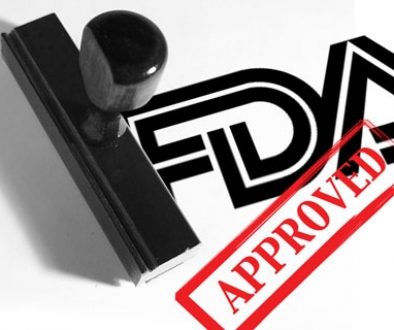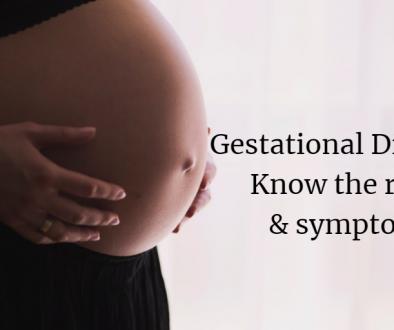Lower Numbers Now Define High Blood Pressure
There’s a new number for high blood pressure and it’s lower than you think.
For decades the numbers that defined high blood pressure were 140/90 mm Hg. But this past November, the American Heart Association (AHA) and the American College of Cardiology (ACC) issued new comprehensive guidelines that indicate high blood pressure should be treated at 130/80 mm Hg. High blood pressure accounts for the second largest number of preventable heart disease and stroke deaths, second only to smoking. It’s known as the “silent killer” because often there are no symptoms, despite its role in significantly increasing the risk for heart disease and stroke.
In the largest study to date, the Systolic Blood Pressure Intervention Trial (SPRINT) began in 2009 and included more than 9,300 participants, recruited from about 100 medical centers and clinical practices from across the United States. The study was designed to determine the best way to treat blood pressure in adults with hypertension, 50 years or older, who are at a high risk for heart disease.
What does this mean?
This means that instead of 1 in 3 (32%) U.S. adults having high blood pressure, now nearly half (46%) of U.S. adults now are defined as having high blood pressure. That’s 14% more adults have hypertension than previously thought. However, the impact of the new guidelines is expected to be greatest among younger people. The prevalence of high blood pressure is expected to triple among men under age 45, and double among women under 45 according to the report.
“Damage to blood vessels begins soon after blood pressure is elevated”, said Dr. Paul Whelton, who is the Show Chwan professor of global public health at Tulane University School of Public Health and Tropical Medicine and School of Medicine in New Orleans. “If you’re only going to focus on events, that ignores the process when it’s beginning. Risk is already going up as you get into your 40s.”
This does not mean that everyone will—though some will— be prescribed medication to lower their blood pressure. This simply means that people will be counseled about changes in lifestyle much earlier than previously advised.
Paul K. Whelton, M.B., M.D., M.Sc., lead author of the guidelines published in the American Heart Association journal, Hypertension and the Journal of the American College of Cardiology, noted the dangers of blood pressure levels between 130-139/80-89 mm Hg. “You’ve already doubled your risk of cardiovascular complications compared to those with a normal level of blood pressure,” he said. “We want to be straight with people – if you already have a doubling of risk, you need to know about it. It doesn’t mean you need medication, but it’s a yellow light that you need to be lowering your blood pressure, mainly with non-drug approaches.”
Blood pressure categories in the new guideline are:
- Normal: Less than 120/80 mm Hg;
- Elevated: Top number (systolic) between 120-129 and bottom number (diastolic) less than 80;
- Stage 1: Systolic between 130-139 or diastolic between 80-89;
- Stage 2: Systolic at least 140 or diastolic at least 90 mm Hg;
- Hypertensive crisis: Top number over 180 and/or bottom number over 120, with patients needing prompt changes in medication if there are no other indications of problems, or immediate hospitalization if there are signs of organ damage.
The new guidelines eliminate the category of prehypertension, which was used for blood pressures with a top number (systolic) between 120-139 mm Hg or a bottom number (diastolic) between 80-89 mm Hg. People with those readings now will be categorized as having either Elevated (120-129 and less than 80) or Stage I hypertension (130-139 or 80-89).
Previous guidelines classified 140/90 mm Hg as Stage 1 hypertension. This level is classified as Stage 2 hypertension under the new guidelines.
Other changes in the new guideline include:
- Only prescribing medication for Stage I hypertension if a patient has already had a cardiovascular event such as a heart attack or stroke, or is at high risk of heart attack or stroke based on age, the presence of diabetes mellitus, chronic kidney disease or calculation of atherosclerotic risk (using the same risk calculator used in evaluating high cholesterol).
- Recognizing that many people will need two or more types of medications to control their blood pressure, and that people may take their pills more consistently if multiple medications are combined into a single pill.
- Identifying socioeconomic status and psychosocial stress as risk factors for high blood pressure that should be considered in a patient’s plan of care.
The successful implementation of these guidelines will lead to improvements in the health of the nation and reduce the risks posed by heart disease and stroke. Stop by one of our pharmacies to get your blood pressure checked and do a medication review. We want to make sure you are taking the right medication and we may recommend you see your doctor if your blood pressure is elevated or if you have other conditions that may affect treatment of hypertension.
Sources: American Heart Association and National Institute of Health.



